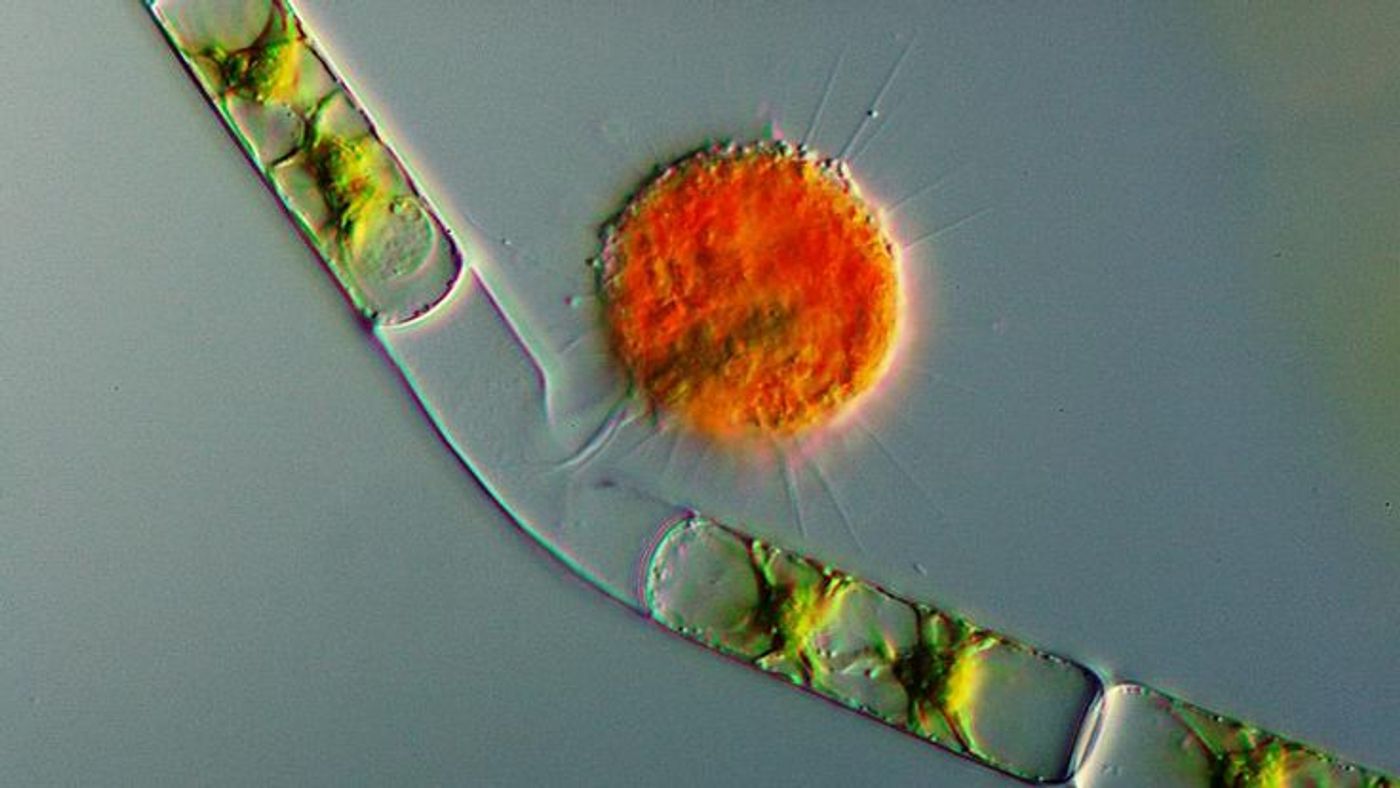Vampyrellids are teeny-tiny vampires. Okay, technically they’re single-celled amoebas that belong to the family Vampyrellidae. (“Teeny-tiny vampires” is way more interesting.)
These so-called “vampire amoebas” were discovered by Leon Semenowitj Cienkowski way back in 1865. They come in various shapes but are typically between 30-100 microns long. The majority are spherical with “filose pseudopods” extending from the cell body (think spheres with long spikes sticking out). The cells are free-living and live in water and soil. (Watch out for the tiny vampires under your feet!)

A vampire amoeba preys on green algae.
Image Credit: BBC
finding tiny holes drilled into fossilized eukaryotes found near the Grand Canyon. She thinks these holes were probably made by vampire amoebas nearly 740 million years ago! (They’re even older than Dracula!)
There’s still one big unanswered question about the little vampires - how do they manage to poke holes in tough, rigid cell walls? According to Sebastian Hess at the University of Cologne, “the perforation of the cell wall … can be done in five to ten minutes … they must have a set of enzymes which can digest plant cell walls”.
The answer to this question could be very useful for companies interested in making biofuels from algae. Algae are easy to grow, but breaking down their cell walls isn’t so straightforward.
Sources: BBC,
UC Santa Barbara,
Science, Encyclopedia of Life, Wikipedia